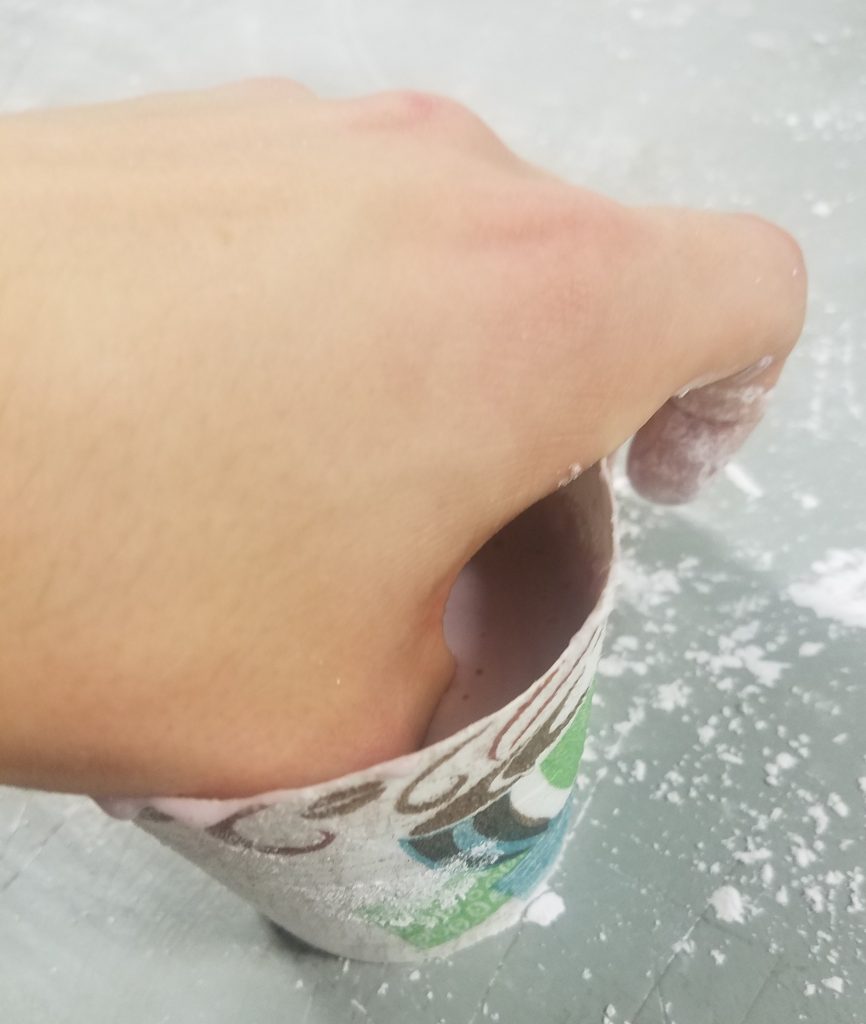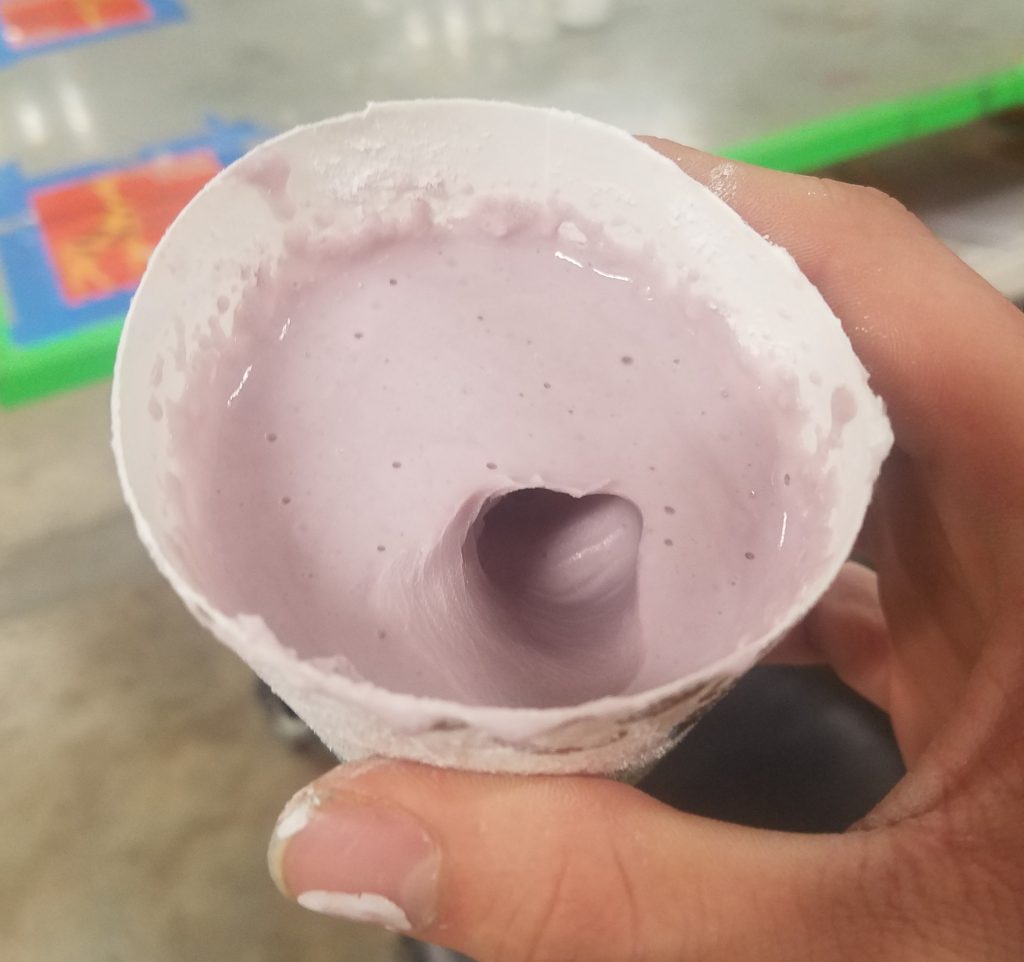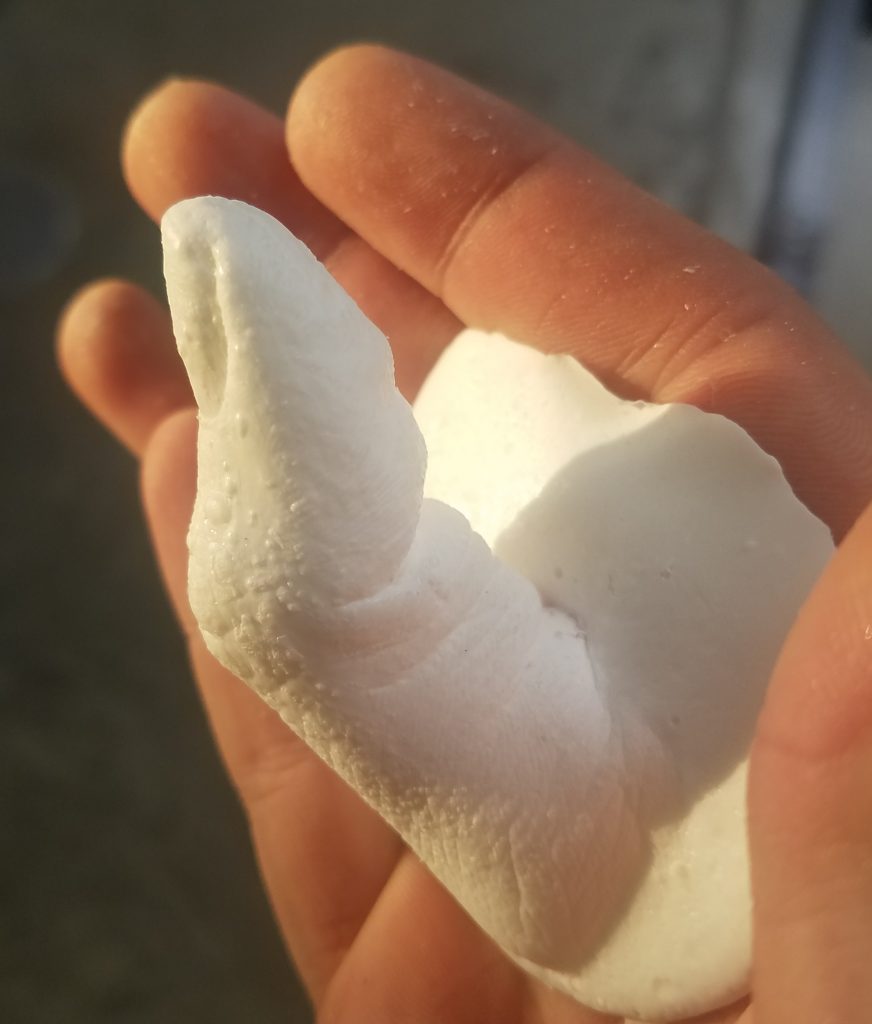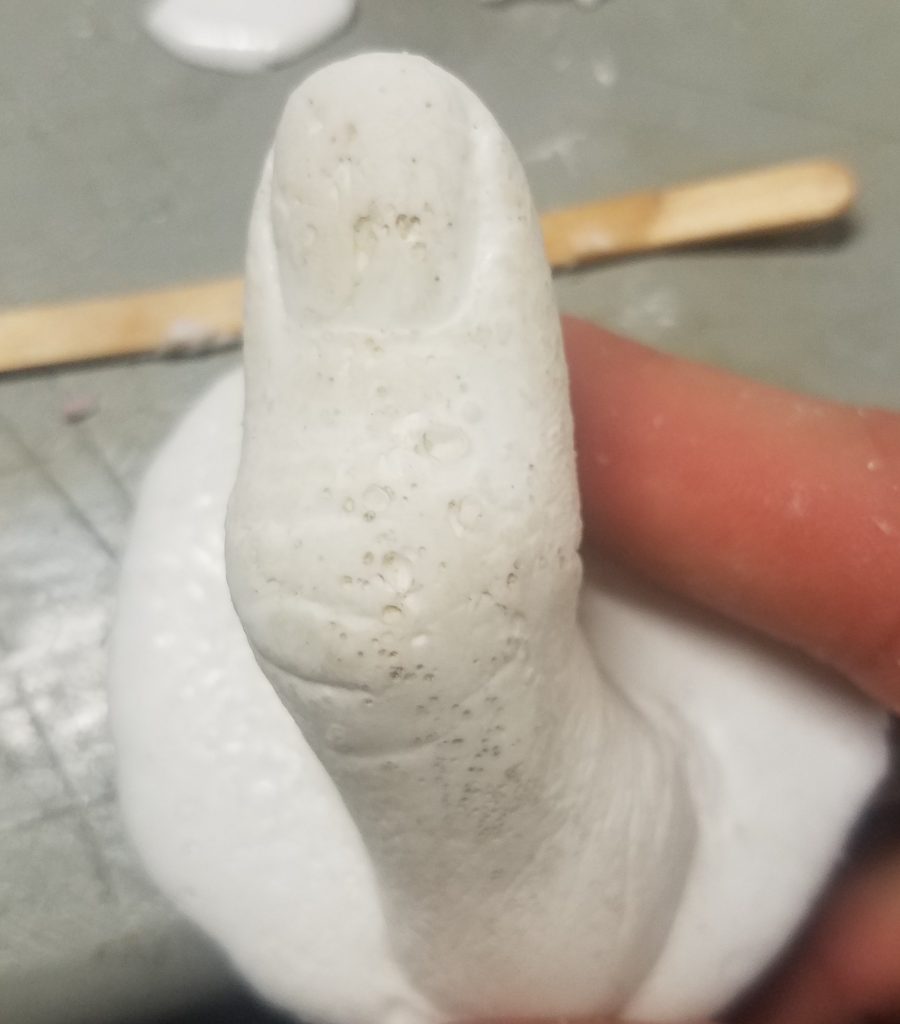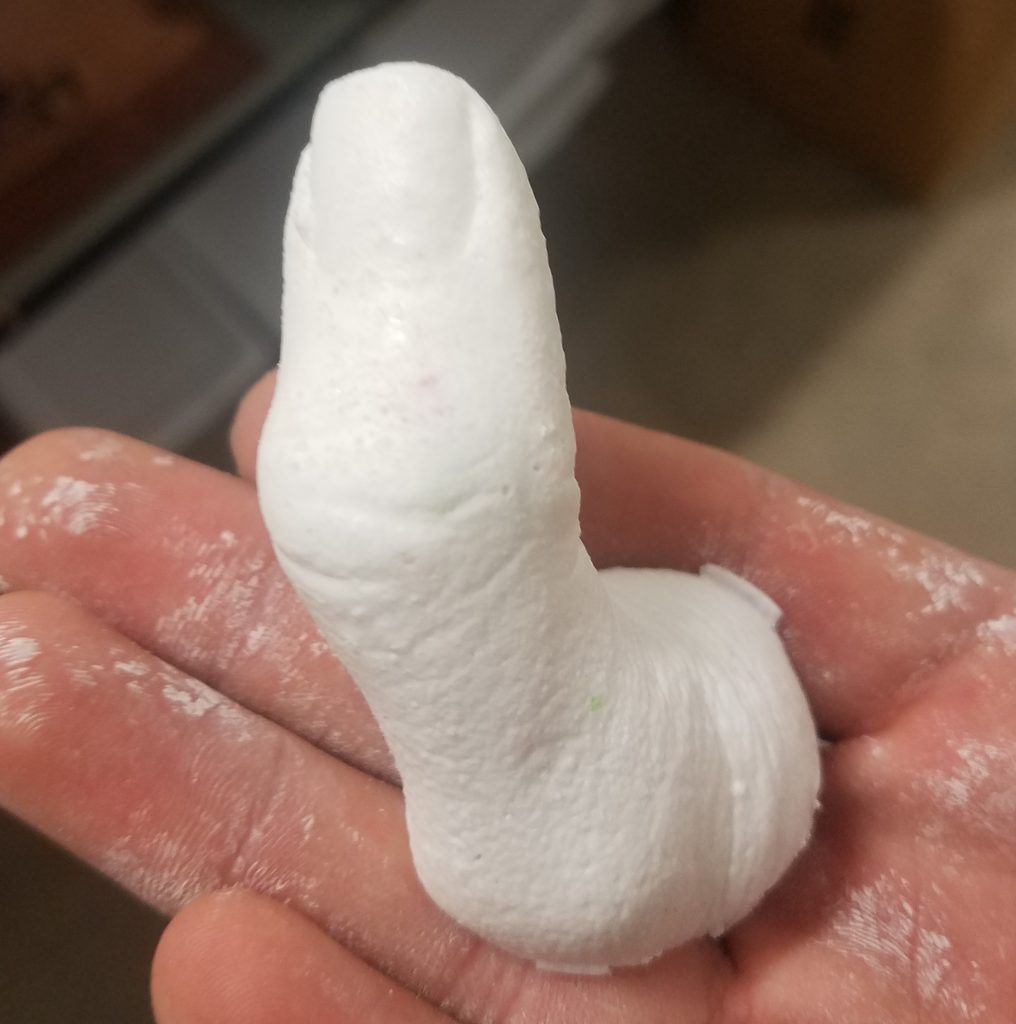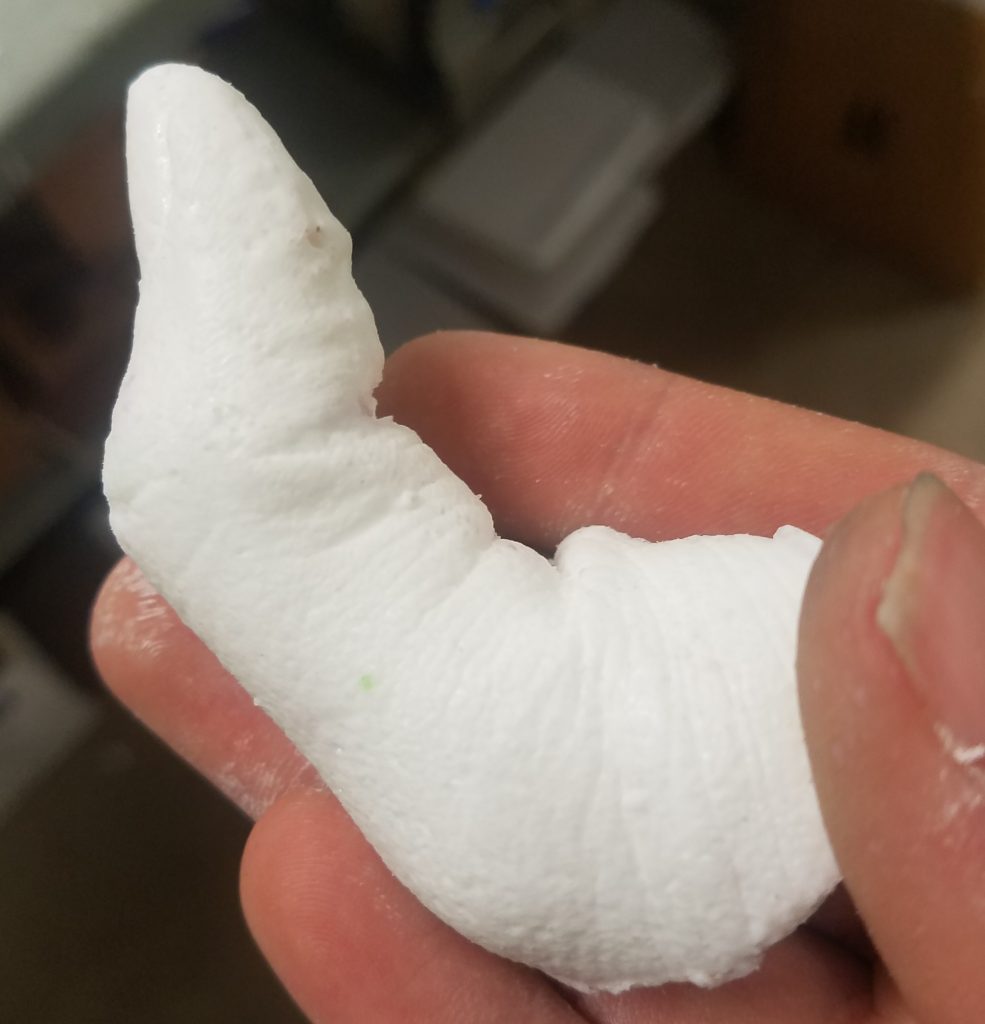On the penultimate episode of ‘Caz in the OEDK: Season 4’, I tackle molding and casting. Specifically, I made an alginate mold of my thumb and used it to cast a plastic replica as a fancy yet creepy wall hook. This was a short but messy project before the big bad final, and these molding techniques will become very important later on.
My first attempt was fairly straightforward. I filled a small cup with warm water, mixed in alginate until I had the correct consistency, and stuck my thumb in. I could feel extra unmixed powder as I stuck my hand in, which was the first sign that something wasn’t quite right. I decided to try to continue, and when I pulled out my hand, the mold looked relatively good. I mixed the Smooth-on and poured it in. Unfortunately, I discovered that I had vastly overestimated the volume of my finger, and there was some waste plastic. Live and learn.
When I pulled out the plastic finger, it looked like it was covered in warts, some large, some small. There were either air bubbles or undissolved particles that left gaps in the alginate, but the result was no bueno. I then tried sanding the finger to smooth down some bumps. This would cut down on detail, but it was very clearly necessary. Unfortunately, sanding made every problem infinitely worse. The plastic picked up all kinds of particles, getting super dirty. Bumps turned into holes for unknown reasons. The finger became a mess. Sanding with new paper and washing the finger did nothing to fix the problems. I had to start over.
Second attempt was poor, but at minimal cost. I focused on mixing the alginate much more thoroughly this time around. Unfortunately, I did not get the proper ratio of water to powder, as I was going by consistency alone. The alginate did not set properly, so the mold was doomed from the start. I didn’t waste any expensive Smooth-on, though, so that’s a plus.
Third try, I measured much more carefully. I mixed equal parts water and alginate, then mixed as finely and vigorously as I could. I spent extra time tapping the solution to get out air bubbles, and there were a lot. I stuck my thumb in and got a much better mold. I mixed much smaller amounts of Smooth-on, and didn’t waste any material at all this time around. When I pulled out the new plastic finger, there were some imperfections, but it was overall much better. I resisted the urge to sand for fear of ruining the part, only taking some material off the back edges to clean them up. I washed the plastic in the sink to try and clean it, but I think it just became dirtier somehow . I would have liked to try again, but Smooth-on and my time were in short supply (and very expensive). I completed my thumb hook with pride.
